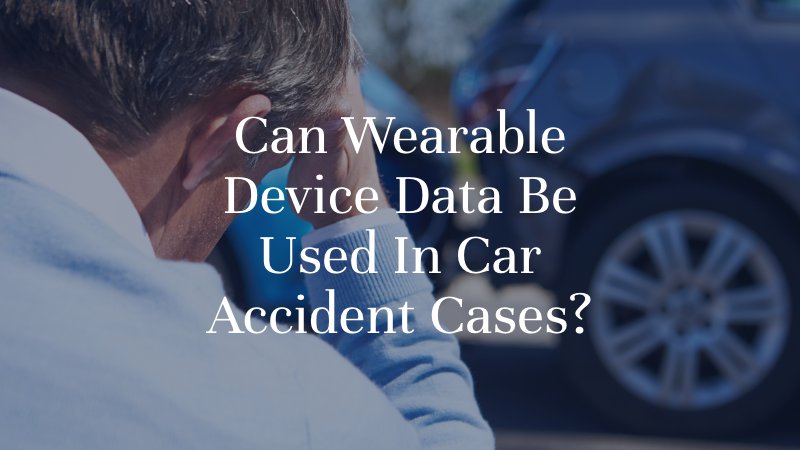Can Wearable Device Data Be Used In Car Accident Cases?

Oklahoma is one of many fault-based insurance states for car accident claims. According to the state’s comparative negligence laws, recovering compensation requires showing compelling evidence of another driver’s negligence, making them liable for damages like medical expenses, lost wages, and compensation for pain and suffering as well as property damage to a vehicle. Unfortunately, insurance companies are rarely anxious to pay out on claims and sometimes dispute or deny injury claims by using tactics such as assigning blame to the injury victim, or asserting that their injuries did not occur in the crash.
When gathering evidence to prove a car accident injury claim, many injury victims ask. “Can I use the data from my wearable device as evidence in my car accident claim?” A car accident lawyer in Oklahoma City is here to help you understand these complications.
What Wearable Devices Record Data During Car Accidents?
Many fitness-conscious people and those with medical conditions take advantage of today’s latest technology to monitor their health and fitness activities through wearable medical devices. These devices record important information such as heart rate, blood pressure, and respiration. Common wearable devices include the following:
- Fitness trackers
- Smartwatches
- Smart rings
- Smartglasses
- Medical devices such as heart rate monitors, pregnancy monitors, and blood pressure monitors
Wearable devices use embedded sensors to measure and record data, typically storing collected information through a connected smartphone app. Medical-grade wearable devices may also send live-time and recorded data to the wearer’s medical provider.
Can I Use My Wearable Device Data as Evidence In a Car Accident Claim?
Digital health information is admissible as evidence in court as long as it meets specific criteria and the person whose data is being used in the claim gives consent for the release of their personal health information. Also, a court must determine if the information is authentic, reliable, and relevant to the claim. Finally, using recorded health information from an injury victim’s wearable device requires interpretation by a medical professional to prevent misinterpretation of the medical information that could negatively impact a claim.
How Can Information From a Wearable Device Help My Car Accident Claim?
There are several ways that information from a wearable device is as evidence in a car accident claims for injury victims. First, a device may capture real-time data during the accident, showing evidence such as increased respiration and heart rate preceding a collision and during an accident, as well as an adverse medical status during the minutes and hours after the accident. The information may reflect the exact timing of an accident, the force of an impact, and the effect of the impact on the motorist’s medical status.
Another way that information from wearable devices is sometimes used in car accident claims is to prove the impact of an injury on the car accident victim’s life by showing the difference in their medical and lifestyle condition before and after the accident. For instance, showing the injury victim’s average activity level before the accident and the decline in their activity level after the accident. This evidence may demonstrate a diminished quality of life, which adds to an injury victim’s recoverable damages in a car accident claim. Contact a personal injury lawyer in Oklahoma City for legal guidance.